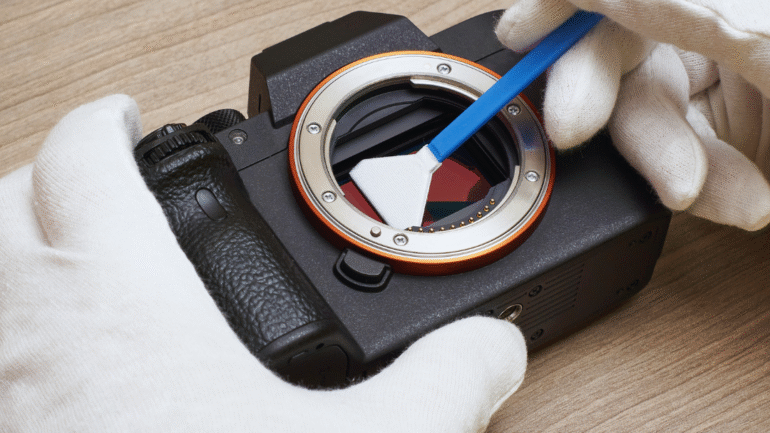The evolution of camera sensors has dramatically transformed photography and videography, enhancing the clarity and detail captured in images. From the early days of film to the rise of digital sensors, technological advancements have played a crucial role in improving image quality across various devices. These advancements have led to higher resolution captures, improved low-light performance, and better dynamic range, fundamentally changing how visual stories are told.
As sensor technology continues to innovate, features such as back-illuminated (BSI) sensors and larger pixel sizes have made significant contributions to image quality. This progress allows photographers and videographers to achieve results that were once thought impossible. The shift from CCD to CMOS sensors showcases how design changes can optimize performance and efficiency, making these devices more accessible to both professionals and amateurs alike.
Understanding the impact of these developments provides insight into the art and science of photography. As sensor capabilities expand, so do the creative possibilities available to users, enabling a richer experience in capturing moments. This evolution not only affects the tools but also influences how stories are conveyed through images, making it essential to explore its implications.
The Foundations of Camera Sensors
Camera sensors form the backbone of modern photography, transitioning from traditional film to sophisticated digital technologies. Understanding their development and function is crucial for grasping how image quality has improved in cameras today.
From Film to Digital Sensor Technology
The evolution from film to digital sensors marked a significant shift in photography. Traditional cameras used 35mm film, capturing images through chemical reactions to light. Companies like Kodak popularized color film, which enabled vibrant image production.
Digital cameras, starting with models like the Olympus E-1, introduced electronic image sensors. These sensors capture light electronically, providing immediate image review. As technology advanced, sensor technologies such as CCD (Charge-Coupled Device) and CMOS (Complementary Metal-Oxide-Semiconductor) emerged, each offering distinct advantages in terms of image quality, power efficiency, and cost.
How Image Sensors Work
Image sensors operate by converting light into electronic signals. When light hits the sensor, each pixel detects brightness levels and converts them into electrical charges. These charges are then processed to create an image.
The two main types of sensors are CCD and CMOS. CCD sensors are known for their high-quality images with low noise, while CMOS sensors have advantages in speed and integration.
Key components of image sensors include:
- Photodiodes: Convert light into electrical signals.
- Analog-to-Digital Converters (ADC): Transform analog signals into digital data.
- Color Filters: Separate light into red, green, and blue components, essential for accurate color perception.
Key Metrics: Pixels, Resolution, and Dynamic Range
Several metrics define the performance of image sensors. Pixels play a crucial role, with the number of pixels on a sensor determining the resolution of an image. Higher pixel counts lead to more detailed images, commonly measured in megapixels.
Resolution also depends on sensor size and technology. A larger sensor can accommodate more pixels, enhancing clarity and detail.
Dynamic range measures a sensor’s ability to capture details in shadows and highlights, crucial for achieving accurate exposure. A sensor with high dynamic range can reproduce a scene’s full tonal range, resulting in richer and more balanced photographs.
These foundational elements highlight the complex interplay between technology and artistry in photography, shaping the visual experiences captured in the digital era.
Advancements in Sensor Technology and Their Impact
The development of sensor technology has significantly transformed image capture in recent years. Key advances include improvements in CCD and CMOS sensors, as well as innovations in pixel designs that enhance image quality and device efficiency.
CCD Image Sensors: Charge-Coupled Device Innovation
Charge-Coupled Device (CCD) sensors have long been respected for their ability to produce high-quality images with excellent light sensitivity. This technology captures light using a series of capacitors that transfer charge through an integrated circuit.
CCD sensors excel in applications requiring sharp image detail, such as astrophotography and professional video. They offer high dynamic range and low noise levels, making them suitable for low-light scenarios. The development of back-illuminated (BSI) CCD sensors has further improved sensitivity by allowing light to hit the sensor directly, thus enhancing performance.
CMOS Image Sensors: The Rise of Low Power and Integration
Complementary Metal-Oxide-Semiconductor (CMOS) image sensors have gained substantial traction due to their low power consumption and the ability to integrate additional functionalities onto a single chip. This technology allows for significant miniaturization of devices while maintaining competitive image quality.
CMOS sensors utilize active-pixel designs, allowing each pixel to process light individually, which leads to faster readout speeds. This has made CMOS sensors the choice for mobile devices and applications in real-time video processing. Moreover, advancements in noise reduction and dynamic range have narrowed the quality gap between CMOS and CCD sensors.
Active-Pixel vs Passive-Pixel Sensor Designs
There are two primary designs in sensor technology: active-pixel and passive-pixel sensors. Active-pixel sensors (APS) allow each pixel to independently capture light and process signals. This architecture leads to quicker data acquisition and better imaging performance in various lighting conditions.
In contrast, passive-pixel sensors rely on a common readout and offer slower performance. While this design can be more straightforward and potentially cheaper to produce, it often results in poorer image quality, especially under challenging conditions. The shift towards active-pixel designs has propelled advancements in the image sensor market, leading to higher quality images and enhanced user experiences.
Image Quality Improvements and Modern Applications
Advancements in camera sensor technology have significantly enhanced image quality while broadening their applications. Key improvements are evident in noise management and the technical specifications of sensors, facilitating use in various fields, from security to medical imaging.
Controlling Noise and Enhancing Signal
Noise reduction remains a critical focus in sensor design. Modern sensors often employ techniques such as spatial and temporal noise reduction to improve image fidelity.
ISO Settings: Higher ISO settings increase sensitivity to light but also raise noise levels. Recent advancements in noise control allow for better image quality even at elevated ISO values.
Electrical Signal: Enhancing the electrical signal generated by light exposure reduces noise. Improved algorithms further help in distinguishing signal from noise, enhancing clarity in diverse environments.
Sensor Size, Fill Factor, and Readout Noise
The relationship between sensor size and image quality is significant. Larger sensors often yield better performance due to their greater light-collecting area.
Fill Factor: A sensor’s fill factor, defined as the ratio of light-sensitive area to total pixel area, directly impacts image quality. Sensors with higher fill factors capture more light, reducing noise and improving dynamic range.
Readout Noise: Modern sensors exhibit reduced readout noise levels. This enhancement allows for brighter images in low-light situations, leading to better detail retention and color perception.
Expanding Roles: Security, Medical Imaging, and Motion Detection
Camera sensors are integral to various applications beyond traditional photography.
Security Monitoring: High-quality imaging is vital in surveillance. Enhanced sensors ensure clearer images in low-light conditions, crucial for identifying individuals or capturing events.
Medical Imaging: In fields like endoscopy, camera sensors deliver critical visual feedback. Improved image quality aids in precise diagnostics and treatment.
Motion Detection: In motion-sensing applications, enhanced image quality allows for better tracking of movement. This is essential in systems like smart home security, where accuracy is paramount.
Digital Cameras and the Future of Imaging
The advancement of digital cameras is characterized by innovative sensor technology and evolving formats. These changes impact both consumer and professional devices, as well as trends shaping the image sensor market.
Evolution of Digital SLRs and Emerging Formats
Digital Single-Lens Reflex (DSLR) cameras have made significant strides since their inception, primarily driven by advancements in CMOS sensors. These sensors offer faster processing speeds and improved low-light performance, enhancing image quality.
Emerging formats such as mirrorless cameras provide a more compact option without sacrificing quality. They employ similar sensor technology but eliminate the mirror mechanism, resulting in lighter, more versatile devices. As technology continues to advance, the distinction between DSLRs and mirrorless formats may blur, pushing innovation further.
Specialized Sensors in Consumer and Professional Devices
Specialized sensors are increasingly common in both consumer and professional digital cameras. For professional photographers, larger sensors like full-frame options deliver superior dynamic range and better performance in various lighting conditions.
In consumer devices, manufacturers focus on integrating features like dual-pixel autofocus and stabilization technologies. These enhancements cater to users seeking improved image quality without requiring extensive knowledge of photography. As a result, camera sensor technology becomes more accessible while maintaining robust performance for enthusiasts.
Trends Influencing the Image Sensor Market
Emerging technological trends are reshaping the image sensor market. The integration of artificial intelligence (AI) into camera systems enhances automated shooting and focuses capabilities.
Additionally, demand for compact devices drives manufacturers to improve sensor performance while reducing size. The rise of smartphone photography also influences the landscape, prompting brands to innovate. As image technology evolves, the future promises further integration of machine learning and enhanced sensor technology to meet consumer expectations.





